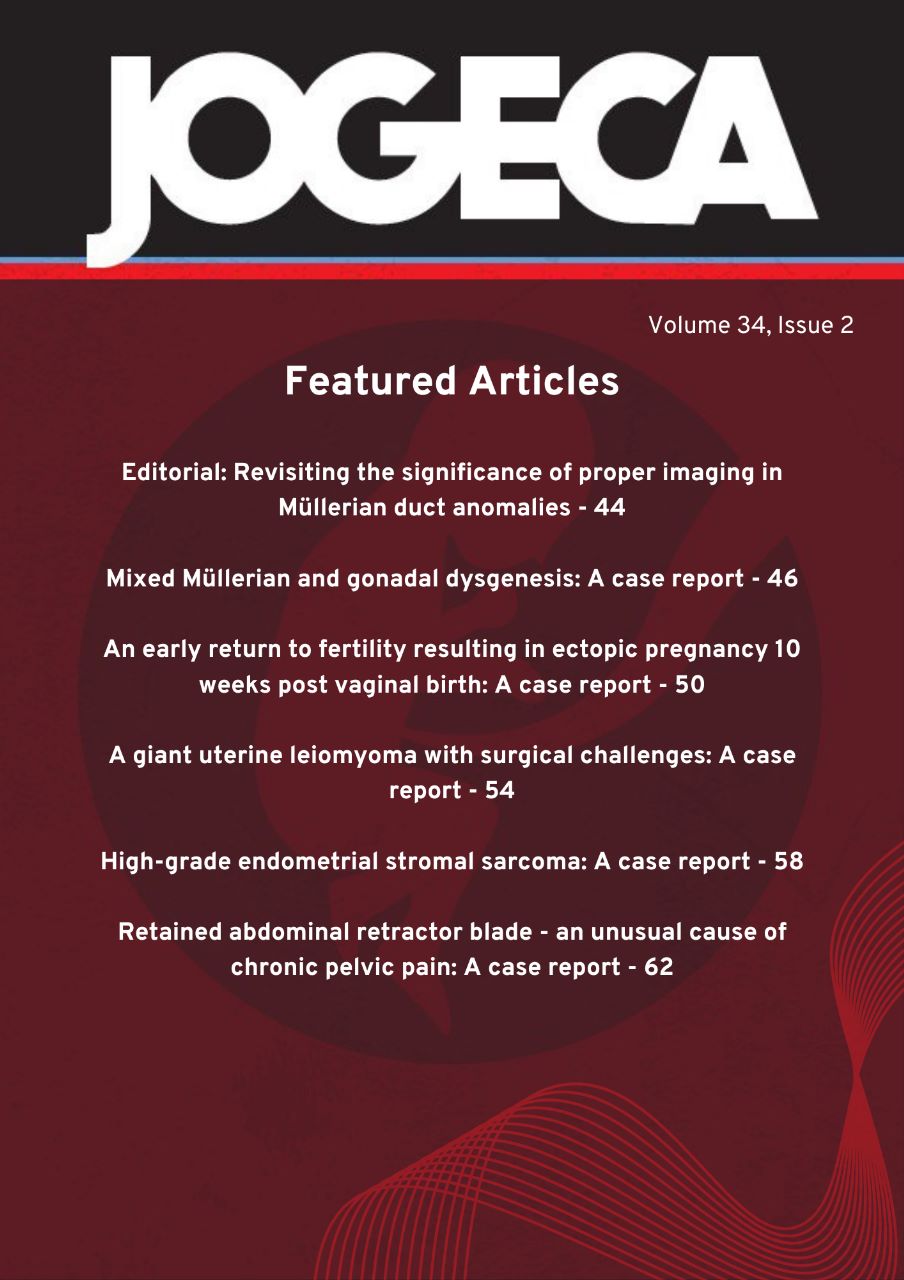Twin-to-twin transfusion syndrome – challenges in management: A case series
DOI:
https://doi.org/10.59692/jogeca.v36i1.185Abstract
Background: Twin-to-twin transfusion syndrome (TTTS) affects up to 20% of monochorionic pregnancies and has a mortality rate as high as 90% without timely intervention. The underlying mechanism is believed to be unbalanced placental blood flow via arteriovenous anastomoses. Early diagnosis and prompt management are crucial.
Case series: This study presents four cases of TTTS managed at Aga Khan University Hospital Nairobi, highlighting the challenges faced.
Case 1: We diagnosed stage 2 TTTS and selective fetal growth restriction in a 21-year-old with a monochorionic diamniotic (MCDA) twin pregnancy. TTTS progressed to Stage 5 despite undergoing serial amnioreduction. Financial constraints and religious beliefs complicated continued care, necessitating transfer to another facility.
Case 2: A 28-year-old with a MCDA twin pregnancy presented with abdominal discomfort. We diagnosed stage 1 TTTS and opted for expectant management. The patients was lost to follow-up despite presenting later with symptoms of worsening TTTS, increased abdominal discomfort, and reduction in fetal movements.
Case 3: We diagnosed stage 2 TTTS in a 30-year-old with MCDA twin pregnancy. The patient opted for the termination of pregnancy, highlighting the complex ethical considerations involved in TTTS management.
Case 4: A 24-year-old with an MCDA twin pregnancy and stage 2 TTTS at 24 weeks of gestation was scheduled for amnioreduction but experienced prelabor rupture of membranes a priori. She eventually experienced the neonatal demise of both twins.
Discussion: These cases illustrate the challenges faced in managing TTTS in a resource-limited setting. Delayed diagnosis due to inadequate prenatal care, limited access to specialist centers, and financial constraints are significant obstacles. The unavailability of fetal laser ablation, the gold standard treatment, necessitates reliance on palliative measures, such as serial amnioreduction, with limited effectiveness.
Conclusion: Expanding access to prenatal care through telemedicine in rural areas can enable an early diagnosis. Upgrading healthcare infrastructure and addressing financial barriers are crucial to facilitate regular follow-up and access to advanced interventions, such as laser coagulation, thus improving the prognosis of TTTS.
Downloads
Published
How to Cite
Issue
Section
Categories
License
Copyright (c) 2024 The Authors.

This work is licensed under a Creative Commons Attribution 4.0 International License.




